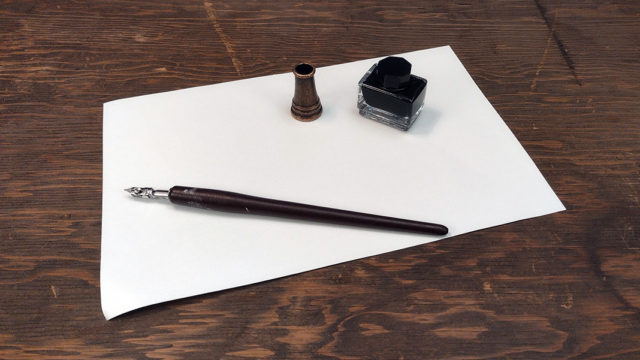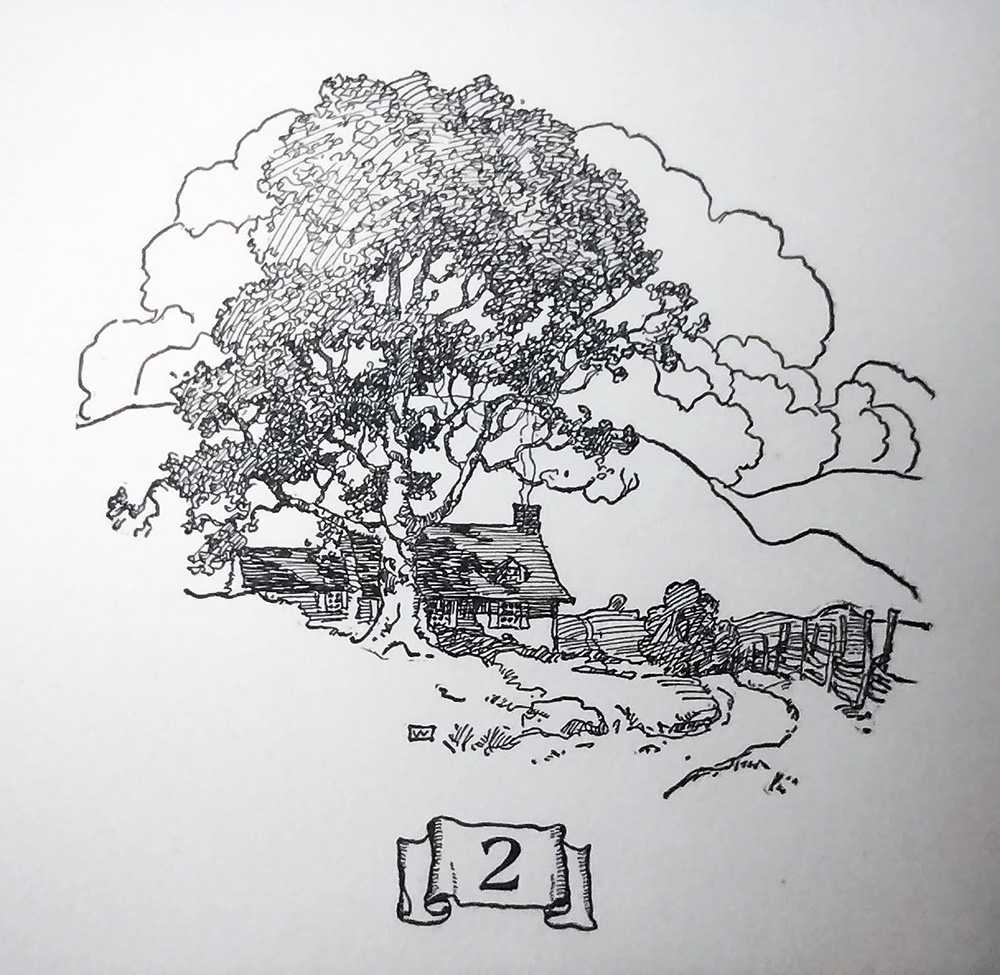In eighth-grade art class, when our teacher told us we were going to “do a unit” on pen and ink drawing, I envisioned a farmhouse under a spreading tree, with a rail fence and a country lane receding into the background over the brow of a hill. But our teacher wanted us to work from a photograph, and I didn’t live in a farmhouse, or on a lane, I lived in a three-bedroom Dutch Colonial in a well-tended suburb. My parents didn’t go in much for taking photos, but we did have one of our front porch, and since the banisters and newels repeated simple patterns that I could use as a crutch, I chose that. I hatched here, cross-hatched there. There was a curved element somewhere that I spent a lot of time on, hatching and cross-hatching, trying to get it to look three-dimensional. It wasn’t very good, but nothing I did in art class was very good.
Years later, as an adult, whenever I happened upon a certain kind of line drawing in an old children’s book, I was filled with a longing that was hard both to pin down and to explain. It had something to do with a house that was merely a starting point, a place to step out of in order to head down a path, dip out of sight, appear far away on the next hill, then top it and disappear again, journeying toward some place invisible, unimaginable. When I finished college I didn’t know what to do with myself, so after earning some money at odd jobs I got on a bicycle and went camping for two years in Europe. When people on the road or old friends from home asked me if I had any plans, I tended to say the same thing: I planned to bike over the next hill to see what was there, then bike over the hill after that. I ended the trip nearly forty years ago, but still today, at night, the dream I dream more than any other is of wandering through a strange landscape, strangely lit, on foot or bicycle, in a hot air balloon, a diminutive steam train, or a clattering jalopy of my own creation, heading for a distant ridge.
When my parents died and I cleared out their attic, I came across two books illustrated by N. C. Wyeth, Rip Van Winkle and The Yearling. I knew that I had read The Yearling as an assignment in seventh grade, and I remembered Wyeth’s colorful oil illustrations as soon as I saw them. I didn’t specifically recall reading Rip Van Winkle, but the pictures were also potently familiar. Unlike The Yearling, Rip Van Winkle included pen and ink sketches. On page two I saw this:
In a movie, it would have been one of those melodramatic revelations that a visual medium is forced to present in straightforward visual form–moments that I never quite bought. But there it all was: the farmhouse, the venerable tree, the rail fence, the inviting path beginning front and near center, then angling back and away, disappearing, reappearing like Ariadne’s thread on the farther hill. The mountains beyond, you will notice, are featureless, a design common to all Wyeth’s pen and ink sketches in Rip Van Winkle. They’re half way to being clouds. And behind them, the real clouds, in their heaped-up, solid forms, are half way to being mountains. The effect is to suggest that the path, after topping that distant hatched hill, will first cross those ghostly mountains and then, undeterred, climb the clouds, all the while gradually losing detail, evanescing. If you follow that path, you, too, will simplify and dissolve. You will be translated. And what to say, how to describe that cloud-country you’re heading for? Well, that’s the point—there’s nothing you can say in this world about that perfect void.
N. C. Wyeth died in 1945. Some forty years later, his son, the artist Andrew Wyeth, wrote, “Pa rarely worked in pen and ink. I always liked his pen drawings for Rip Van Winkle and The Mysterious Island—they had great quality. But he dismissed them, saying, ‘No, Andy, they’re pencil drawings rendered in ink. You have a feeling for pen and ink. I don’t.’” On the day he died, Wyeth stopped his car to observe, along with his grandson, a farmer couple bundling shocks of corn. “This is something you must remember because this is something that is passing,” he told the boy. They climbed back into the car and headed down the lane, dipping out of sight into the small valley and the crossing near Chadds Ford, Pennsylvania, where they were struck by the invisible, unimaginable freight train, which killed them both.

